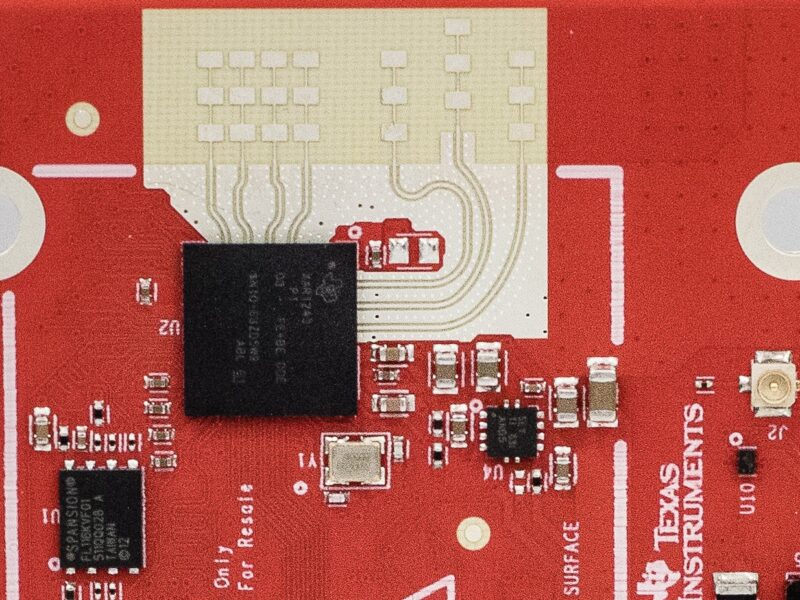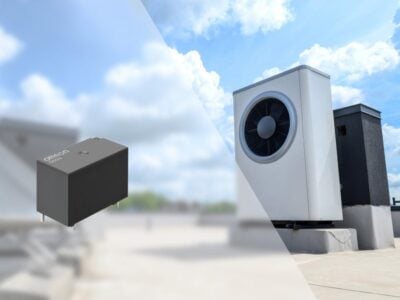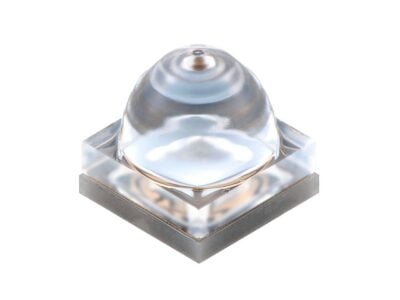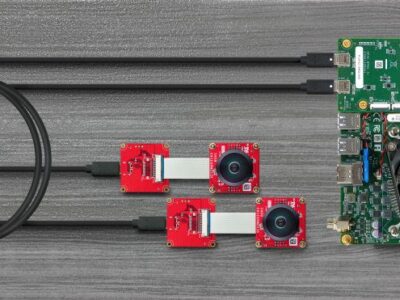
Single-chip mmWave radar IC makes a multi-function sensor platform
TI has been able to have its standard (logic) CMOS process perform at the frequencies (76 to 81 GHz) needed for the transmit and receive aspects of a radar sensor – at low power levels. As the process is CMOS, it has also been able to integrate the complete analogue front end, signal processing, and – optionally – a microcontroller core and a DSP core. These are an ARM Cortex-R4 (real-time-optimised) core and a TI C674 DSP.
This yields a range of solutions, In one sense the most complex chips may meet the simplest needs. When a measurement function is a stand-alone device – a distance measurement in say, a production process, or a level detection, the chip with on-board processing will yield a final measured value. Conversely, in the automotive radar space, or other environment where there is extensive sensor fusion and interpretation of data, the “bare” radar function can send “raw” data onwards to a host processor.
The emerging connected world, TI comments, needs sensing technology that can perform in a wide range of environmental conditions, through barriers, and provide accurate detection over a spread of distances, “mmWave is the only sensing technology able to meet all these challenges”. Among other assertions, TI says that this “immediately obsoletes” ultrasonics (in parking sensors, for example).
TI emphasises that being able to make the chip in CMOS (prior devices have used silicon-germanium technology) opens a new era for radar-type measurements; the company believes, according to a spokesman, that it has a lead of at least months, and possibly years, over other suppliers working in the same area. The product range includes five configurations across two families of sensors with a complete end-to-end development platform. The two families are designated AWR1x and IWR1x, to indicate optimisation for automotive or industrial applications, respectively. The products are capable of, TI adds, up to three times more accurate sensing than current mmWave solutions, supporting, “intelligent and contactless sensing”. Each is capable of dynamic multi-mode operation, that is, switching between fast/slow and close/distant detection, on the fly.
With or without the DSP and microcontroller cores, the chips offer sensing with less than a 4-centimetre range resolution, range accuracy down to less than 50 micrometers and range up to 300 metres. Power is in the range of 150mW. The single-chip sensor portfolio can dynamically adapt to changing conditions, bring multi modal functionality to avoid false positives and deliver ranges of sensing to multiple applications. IWR1x and AWR1x mmWave sensors can sense accurately through plastic, dry wall [partition walls], clothing, glass and many other materials, and through environmental conditions such as lighting, rain, dust, fog or frost. One of the sensing applications that TI quotes is that of drones (UAVs); today they have, TI says, the problem that power lines and other suspended wires are very hard to detect – this device can detect them at 80m range.
The sensors have been designed to co-exist with multiple instances of their own range, or with other services in the mmWave spectrum, and should not see a degradation in performance as the 80-GHz “noise level” inevitably ramps up.
Designing for Society of Automotive Engineers (SAE) International Level 2 and above functionality in vehicles, sensor size and power can be a particular hindrance, overcome with AWR1x sensors that can be applied in advanced driver assistance systems (ADAS) and autonomous driving safety features— including ISO 26262 which enables Automotive safety integrity level (ASIL)-B— and in automated parking assistance, pedestrian detection, and occupancy and driver monitoring. More on automotive at; www.ti.com/awr and for the industrial space; www.ti.com/iwr
A mmWave software development kit (SDK) includes sample algorithms and software libraries which simplify RF designs through less than 20 simple application programming interfaces (APIs). The AWR1x and IWR1x EVMs are available for $299.00.
Texas Instruments; www.ti.com/mmwave-pr-eu
 If you enjoyed this article, you will like the following ones: don't miss them by subscribing to :
eeNews on Google News
If you enjoyed this article, you will like the following ones: don't miss them by subscribing to :
eeNews on Google News




